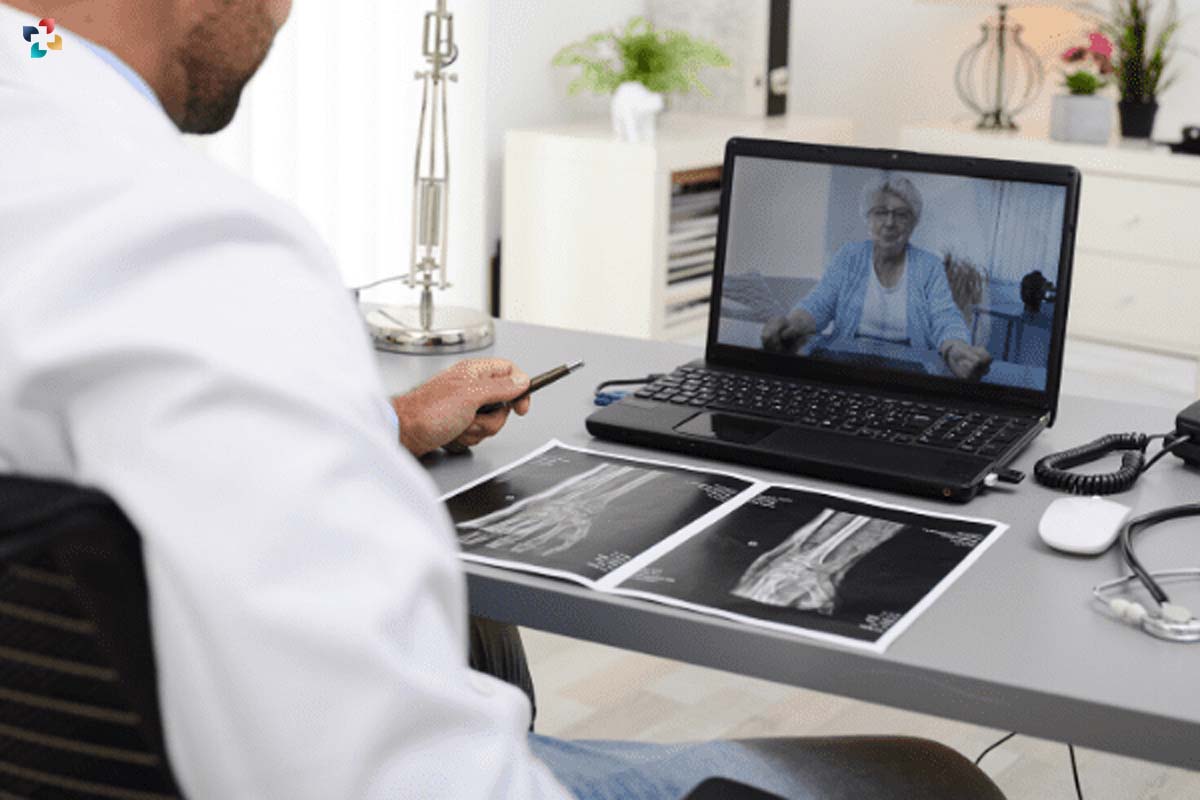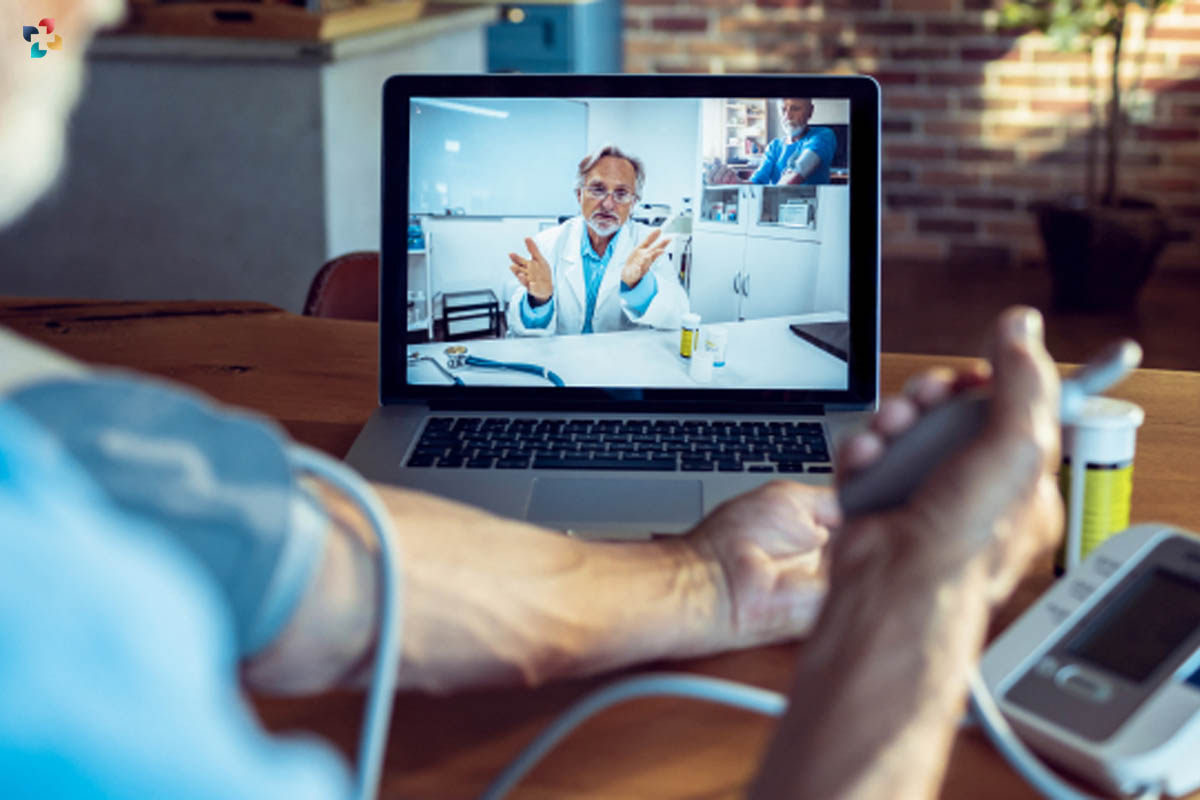Telehealth, also known as telemedicine or telecare, is the use of digital communication technologies to provide remote medical care, education, and health-related services. In rural areas, where there are often fewer healthcare providers and limited access to medical facilities, telehealth can help bridge the gap in healthcare delivery. Here are ten Uses of Telehealth in Rural Healthcare delivery:
Here are 10 Uses of Telehealth in Rural Healthcare Delivery;
1. Remote Patient Monitoring
Remote patient monitoring (RPM) is the use of technology to monitor patients’ health status outside of the traditional healthcare setting, such as in their homes. This technology can help healthcare providers keep an eye on their patient’s health and catch potential health problems early on. For example, RPM can be used to monitor patients with chronic conditions like diabetes, hypertension, or heart disease, to make sure they are taking their medications as prescribed and to detect any changes in their health that may require intervention. This is one of the important use in the list of Uses of Telehealth in Rural Healthcare Delivery.
In rural areas, where there may be limited access to medical facilities, RPM can be especially useful. Patients can use devices like blood pressure cuffs, glucose meters, and pulse oximeters to collect and transmit data to their healthcare provider, who can then monitor their health remotely and make adjustments to their treatment plan as needed.
2. Teleconsultations
Uses of Telehealth in Rural Healthcare involve healthcare providers communicating with patients through video conferencing or telephone calls. This approach is especially useful for patients in rural areas who may have limited access to healthcare providers. By conducting teleconsultations, healthcare providers can assess patients’ symptoms, make diagnoses, and provide treatment recommendations remotely.

Teleconsultations can be used for a wide range of healthcare needs, including primary care, specialty care, mental health services, and more. In rural areas, where there may be a shortage of healthcare providers, teleconsultations can help ensure that patients receive the care they need, regardless of their location.
3. Telepharmacy
Telepharmacy is the use of telehealth technology to provide remote pharmacy services. In rural areas, where there may be a shortage of pharmacists and limited access to medications, telepharmacy can help improve access to essential medications and improve patient outcomes.
Telepharmacy can be used for a variety of pharmacy services, including medication counseling, medication therapy management, prescription verification, and more. Telepharmacy services can be provided by a licensed pharmacist who is located remotely, allowing patients in rural areas to access pharmacy services without traveling long distances.
4. Telestroke
Telestroke is the use of telehealth technology to provide remote stroke care. In rural areas, where there may be limited access to stroke specialists and medical facilities, telestroke can help improve access to timely and effective stroke care. Telestroke technology allows stroke specialists to remotely assess patients and make treatment recommendations based on real-time data. This can help reduce the time it takes to diagnose and treat a stroke, which can improve patient outcomes.
5. Remote Imaging
Remote imaging involves the use of telehealth technology to transmit medical images, such as X-rays, CT scans, and MRIs, from one location to another. In rural areas, where there may be limited access to medical imaging services, remote imaging can help improve access to timely and accurate diagnoses. Remote imaging can be used for a variety of medical conditions, including injuries, infections, and chronic diseases. By transmitting medical images remotely, healthcare providers in rural areas can get expert opinions from specialists located in other regions, which can help improve patient outcomes.
6. Telepsychiatry

Telepsychiatry is the use of telehealth technology to provide remote mental health services. In rural areas, where there may be a shortage of mental health providers and limited access to mental health services, telepsychiatry can help improve access to care. Telepsychiatry can be used for a variety of mental health services, including psychiatric evaluations, medication management, therapy, and more. By providing mental health services remotely, patients in rural areas can access care from the comfort of their own homes, which can be especially beneficial for patients who may have difficulty traveling to appointments.
7. Teletriage
Teletriage is the use of telehealth technology to triage patients remotely. In rural areas, where there may be limited access to medical facilities and healthcare providers, teletriage can help healthcare providers determine which patients require immediate attention and which can be managed remotely. Teletriage can be used for a variety of healthcare needs, including emergency medical services, primary care, and specialty care. By using teletriage, healthcare providers can make more informed decisions about which patients to refer for in-person care and which patients can be managed remotely, which can help improve patient outcomes.
8. Tele-education
Tele-education involves the use of telehealth technology to provide remote healthcare education and training. In rural areas, where there may be a shortage of healthcare providers and limited access to medical education programs, tele-education can help improve the knowledge and skills of healthcare providers.
Tele-education can be used for a variety of healthcare topics, including disease management, treatment guidelines, and best practices for delivering care in rural areas. By providing remote education and training, healthcare providers in rural areas can stay up-to-date with the latest medical information and improve the quality of care they provide to their patients.
9. Mobile Health
Mobile health, or mHealth, involves the use of mobile devices, such as smartphones and tablets, to deliver healthcare services remotely. In rural areas, where there may be limited access to medical facilities and healthcare providers, mHealth can help improve access to healthcare services and improve patient outcomes. MHealth can be used for a variety of healthcare services, including remote patient monitoring, teleconsultations, medication management, and more. By providing healthcare services through mobile devices, patients in rural areas can access care from the comfort of their own homes, which can be especially beneficial for patients who may have difficulty traveling to appointments.
10. Emergency Medical Services
Telehealth technology can also be used to provide remote emergency medical services in rural areas. For example, telehealth technology can be used to communicate with emergency medical responders in the field, allowing healthcare providers to provide real-time guidance and support.

Uses of Telehealth in Rural Healthcare Delivery, Telehealth technology can also be used to transmit medical data, such as vital signs and medical history, from the field to medical facilities, allowing healthcare providers to prepare for a patient’s arrival and provide more effective treatment.
BOTTOM LINE
Uses of Telehealth in Rural Healthcare Delivery, telehealth technology is being used in a variety of ways to improve healthcare delivery in rural areas. From remote patient monitoring and teleconsultations to telepharmacy and telestroke, telehealth technology is helping bridge the healthcare access gap and improve patient outcomes in rural areas. As technology continues to evolve, it is likely that telehealth will continue to play a vital role in healthcare delivery in rural areas and beyond. We hope you enjoyed reading these 10 Uses of Telehealth in Rural Healthcare Delivery.











